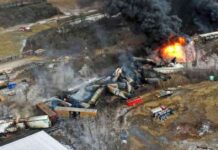Article 4 of the NATO treaty is used by member states that feel threatened by a state or a terrorist organization. The now 30 member states then start formal consultations at the request of the threatened member.
Advice is given as to whether a threat exists and how to counter it. All this happens with one accord and unanimity. Article 4 does not result in direct pressure to act in practice.
The consultation mechanism has been triggered several times in the history of NATO, for example by Turkey.
That was last the case a year ago, when the Turkish soldiers were killed in an attack from Syria. At that time, NATO decided to consult, but took no action.
After the Russian invasion of Ukraine, NATO member Lithuania announced that it would use Article 4. Lithuania borders Belarus, where Russian troops are stationed.
Like Estonia, Latvia, Poland, Slovakia, Hungary and Romania, the Baltic state is part of NATO’s “eastern flank”, which is being reinforced these days with around 6,000 American, 1,000 British, 350 German and soldiers from other nations.
Article 4 is to be distinguished from Article 5 of the NATO Charter. This provides for military assistance from all of NATO should any member country be attacked.
The only time Article 5 came into effect was in 2001, when al Qaeda terrorists killed more than 3,000 people in New York, Washington and Pennsylvania. After the US invasion of Afghanistan, the allies sent a NATO mission to the country.
The NATO treaty can only be applied to member states. Since Ukraine is not a member country, neither Articles 4 nor 5 are relevant here.
Author: Bernd Riegert
The original of this article “Articles 4 and 5 of the NATO Treaty” comes from Deutsche Welle.















